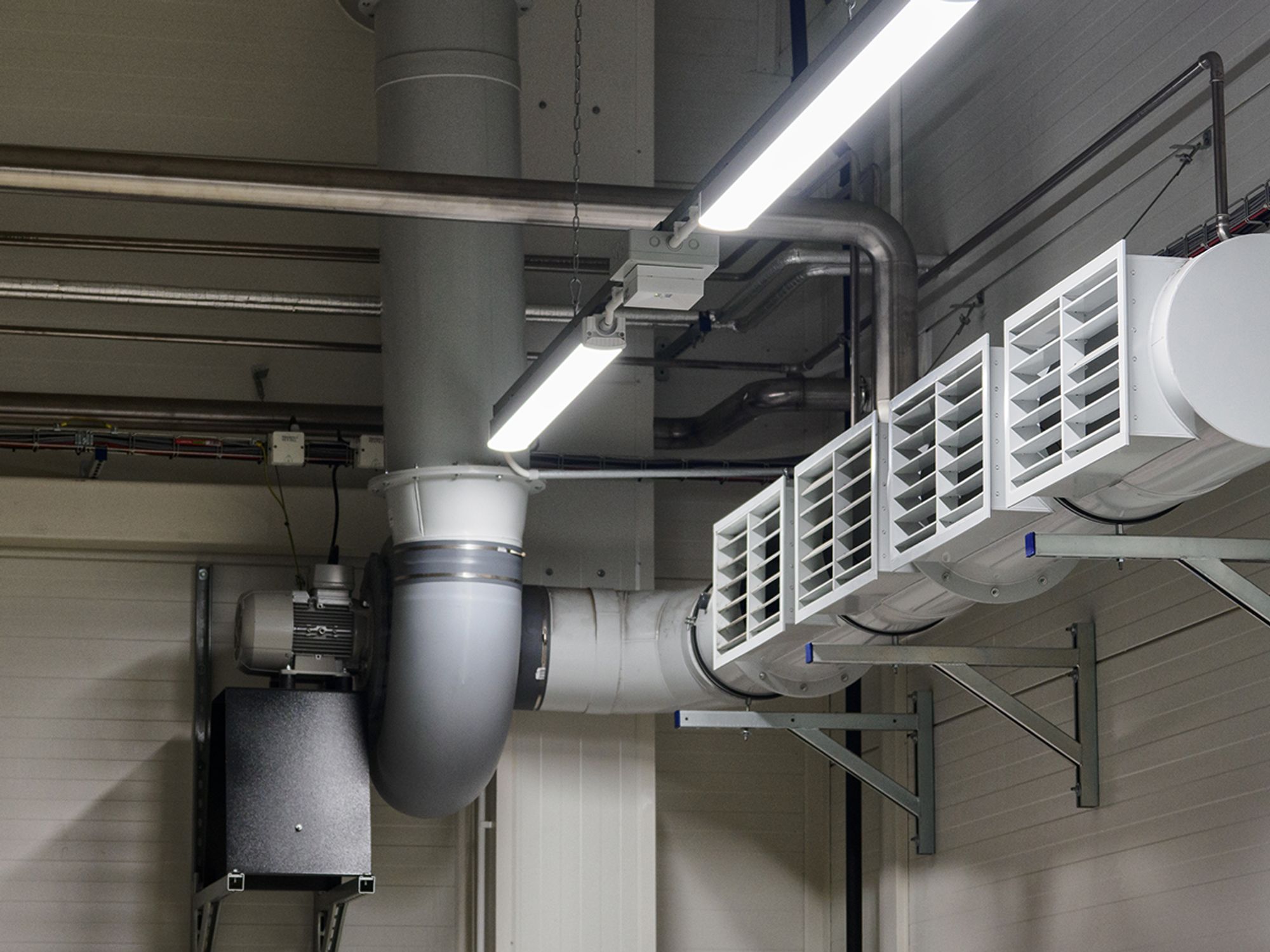General indoor air quality information

- Factors affecting indoor air quality include temperature, humidity, ventilation, and the presence and concentration of inside and outside pollutants.
Indoor air quality (IAQ), also called indoor environmental quality, describes how inside air can affect people’s health, comfort, and ability to work. It can include temperature, humidity, poor ventilation, mold from water damage, and exposure to other chemicals. Currently, the Occupational Safety and Health Administration (OSHA) has no IAQ standards.
The qualities of good IAQ include:
- Comfortable temperature and humidity,
- An adequate supply of fresh outdoor air, and
- Control of pollutants from inside and outside of the building.
Causes of IAQ problems
The most common causes of IAQ problems in buildings are:
- Inadequate ventilation;
- Lack of fresh outdoor air;
- Contaminated air being brought into the building;
- Poor upkeep of ventilation, heating, and air-conditioning systems;
- Dampness and moisture damage due to leaks, flooding, or high humidity;
- Construction or remodeling activities; and
- Contaminated air.
The National Institute for Occupational Safety and Health (NIOSH) found that microbial contamination and contamination from building fabric are also significant sources of IAQ problems.
The relative importance of any single source depends on how much of a given pollutant it emits and how hazardous those emissions are. In some cases, factors such as how old the source is and whether it is properly maintained are significant. For example, an improperly adjusted gas stove can emit significantly more carbon monoxide than one that is properly adjusted.
Also, inadequate ventilation can increase indoor pollutant levels by not bringing in enough outdoor air to dilute emissions from indoor sources and by not carrying indoor air pollutants out of the building. High temperature and humidity levels can also increase concentrations of some pollutants.
Some sources, such as building materials, furnishings, and household products like air fresheners, release pollutants more or less continuously. Other sources, related to activities carried out in the building, release pollutants intermittently. These include:
- Smoking;
- The use of unvented or malfunctioning stoves, furnaces, or space heaters;
- The use of solvents in cleaning and hobby activities;
- The use of paint strippers in redecorating activities; and
- The use of cleaning products and pesticides in housekeeping.
Whether released continuously or intermittently, high concentrations of pollutants can remain in the air for long periods.
Although OSHA has no specific IAQ requirements for employers, poor IAQ is hazardous to employees. Therefore, maintaining good IAQ is employers’ responsibility under the General Duty Clause.
At the most basic, employers must:
- Conduct an assessment of the facility’s indoor air quality.
- If need be, hire an industrial hygienist or other professional to take measurements and offer recommendations.
- Locate dumpsters, smoking areas, chemical storage, and other sources of odors or emissions away from building air intakes.
